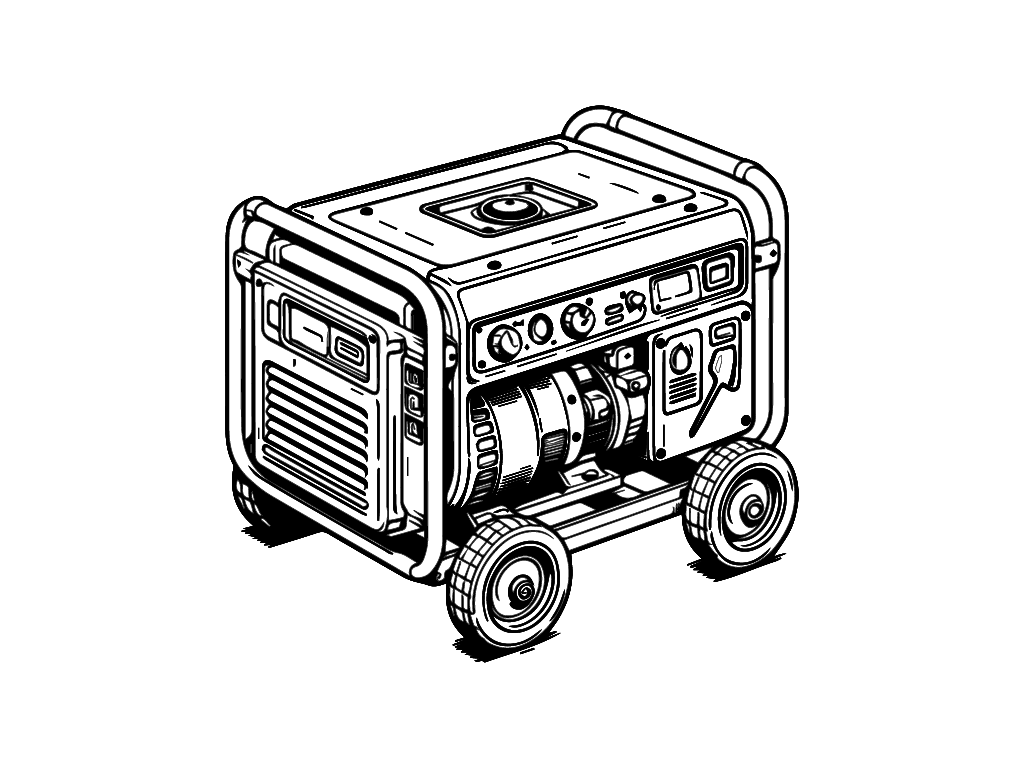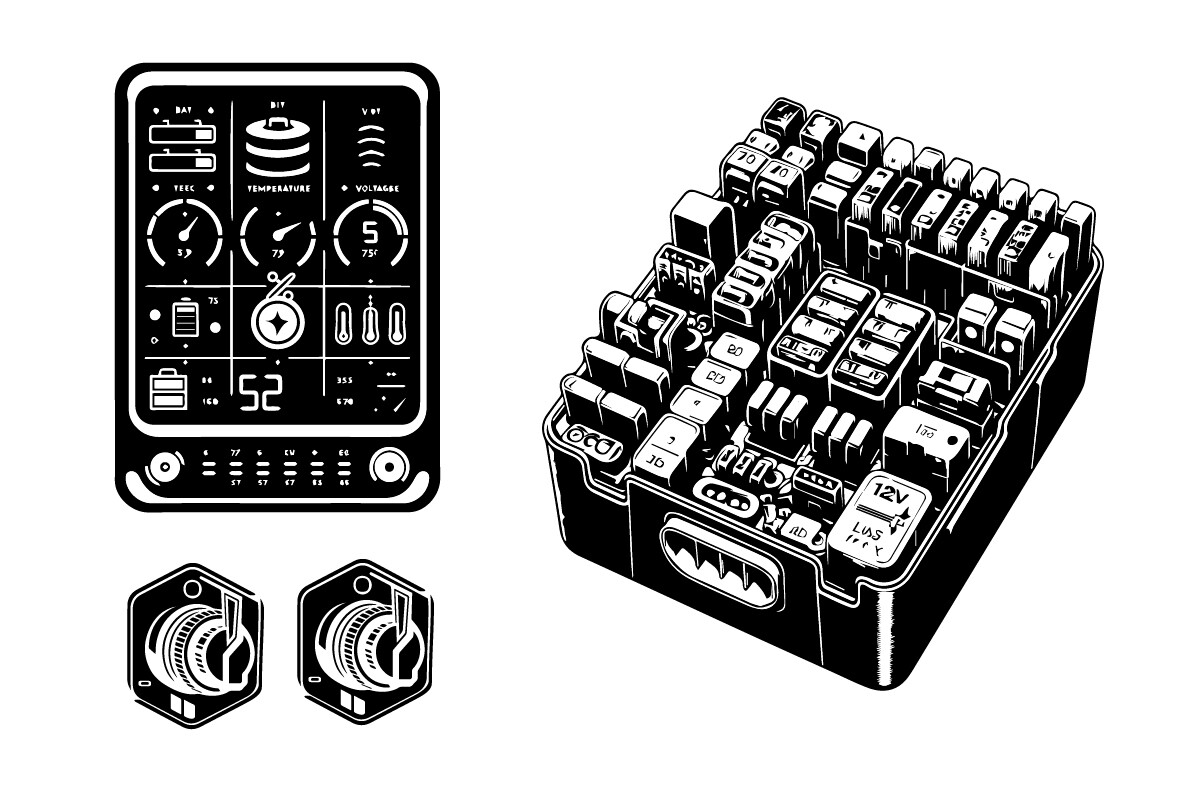It’s time to break free. Forget relying on miles of electrical network you can’t depend on. Grab energy independence by the horns. Learn how to build an off-grid solar system. Be prepared for daily life and through any emergency, with your own electricity.
Today, it’s easier than ever to create a completely off grid solar system. By using modern devices like solar generators and solar power kits, you can build a solar powered system with minimal experience. No electrical engineering degree required! Best of all, you can keep the cost relatively low.
This post provides a basic overview of an off-grid solar system. We’ll review the major components in a way that’s easy to understand. Plus, we’ll go over the quickest and most cost-effective ways you can go about creating your off-grid electrical system.
If you have a grid connection and want to use solar power to get through outages or lower your bill, you might want to head over to our solar backup battery system article instead.
We carefully select the products and services we link to. If you buy through our links, we may earn a commission. There’s no extra cost to you and it helps us provide this information.

How to Go Off the Grid
Going off the grid can mean a lot of different things. For this article, we will focus on off-grid energy systems. Which means that you create all of the electricity for your household needs with no connection to the local energy grid.
Sounds amazing, right? It is. And it’s no longer as hard as it used to be.
The energy cycle is fairly simple. You create it, store it, and use it when needed. The ways you can perform each step vary tremendously. But the basics are always the same for any off-grid design.
An off-grid system relies on four major components:
- Energy production: Solar panels primarily, but fuel generators and other sources can be helpful
- Energy storage: Batteries allow you to create energy when convenient and use it as needed
- Power inversion: Converts the type of electricity coming from batteries into one that some household devices need (from DC to AC)
- Connections, wires, fuses, monitors, and safety elements: The fine details of any electrical system
Visualizing Electricity: It’s All About Flow
Electrical systems can seem complicated. It may help to think of it like you would the flow of water.
When you generate or produce electricity, it’s like water coming from a spring. The more power you generate, the more water flows out of the spring.
But you don’t want the water spilling everywhere. You need to plumb lines (wires) to a place to store it, like a reservoir or water tank. This is your battery bank.
Then you need to plumb lines (wires) from your reservoir (battery) to your faucets (devices/outlets). Through each step of your off-grid solar system design, it must be able to handle the flow you want in a controlled way. If you don’t control it well, you’ll create a disaster. Quite literally fire.

Easiest Off-Grid Solar
You can create the easiest off-grid solar system by using a solar generator.
Also known as portable power stations, these devices include a battery and an inverter as the two main parts. But they also handle charging components, fuses, monitoring systems, and more. All inside of one sleek, simple box.
Solar generators are amazingly flexible. You can connect them to just about any power source imaginable, including all types of solar panels from almost any brand.
Then you simply connect the solar generator to your electrical devices. You can plug them directly into the outlets, or use a high-amp cable from the solar generator to your breaker or fuse boxes.
That’s it! They are modern marvels that make off-grid solar powered energy very simple.

|
BLUETTI AC500 + B300S Home Battery Backup |
AC500 on Bluetti AC500 on Amazon |

|
EcoFlow DELTA Pro |
DP on EcoFlow DP on Amazon |

|
Jackery Solar Generator 1000 Plus + 2*100W Solar Panel |
Buy on Jackery Buy on Amazon |
DIY Off-Grid Solar Power Systems
If you’re savvy and have a desire to learn a lot about electronics, you can create your own DIY off-grid solar power system. The basics remain the same, but each step is much more complicated.
Going back to the water metaphor, this is like building the reservoir, laying all of the plumbing, and installing the water pumps, control valves, and every other component on your own. It can be done, but it’s more intense and you’ll need to use a lot of caution to avoid problems.
The benefit is that you have complete control over every individual component. You may also be able to save some cash. But it will still add up.
Solar kits are another way to create your own off-grid system. These are pre-selected groups of components that you put together. Basically a disassembled solar generator. All the parts you need are there, but you build it yourself.
Let’s dive into the details so you can see if you want to go with the easy solar generator. Or if you want to create your own system from scratch. This article is a simple 101 introduction to get your wheels moving forward either direction.

Generating Power for Off-Grid Systems
The first part of any electrical system is generating the energy. If you want to chop the lifeline that is the energy grid, it’s time to understand solar power and off-grid power generation basics.
Turning to the water metaphor, the power generation creates the initial flow of water. It doesn’t need to flow constantly. It just fills the reservoir (battery) fast enough so you don’t run out.
Solar panels are a great source of energy and may be able to cover 100% of your needs. But in true off-grid fashion, redundancy and backup systems are great. Let’s review both.

Solar Panels: The Basics
Solar panels transform the energy from the sun into useful electricity. When the sunlight hits the panels, it causes electrons to jump around and that creates electrical flow.
The larger your solar panels, the more energy they create. The size and power of solar panels are measured in Watts (W).
The energy they create goes from the panels, through a charger (an essential element), and into the battery.
The batteries absorb the generated energy and hold it to use whenever you want. This is how solar systems work at night or on cloudy days.
Your off-grid solar panels can be:
- Fixed solar panels: Mounted to a roof or another permanent structure on the ground
- Portable solar panels: Typically folding and easily deployed anywhere you want
Without too many details, a small solar array for an off-grid cabin would be around 500W. A serious off-grid solar array that can power many devices can be 2,000W (2kW) or more. Homes with heavy-duty electrical appliances can have solar arrays of 10,000W (10kW) or more.
Remember, this starts the flow of water (electricity) that you’ll store and use as you need it.
Part of your solar power system design is figuring out the solar panel calculations. It’s also important to understand how to connect them so you stay within the specifications of your charger or power station.

Fuel Generators: How Fossil Fuels Can Still Help
Solar panels can be very powerful and create all the energy you need. But they aren’t perfect. Long storms, short winter days, and other situations can diminish their abilities. And it’s wise to have a backup in case of solar panel damage or malfunction. A little boost from dinosaur juice can go a long way.
Imagine your incoming water (energy) source freezes up or runs dry for any reason. Wouldn’t it be nice if you could call in a truck to refill your reservoir (battery) instantly?
That’s what a propane, gasoline, or diesel generator can do. They are an excellent backup power supply that will rapidly charge your batteries.
Many people pair off-grid solar with a backup fuel generator. You get hassle-free energy most of the time through solar. Then when you need to guzzle a fossil fuel, you can do it for a short burst every now and then.
Usually, you only need to run it for a couple hours. Then you can get back to enjoying the silent battery power. One of the great things about having sufficient battery capacity is that you don’t have to continuously run your generator, like in the old RV days.
If you want an advanced fuel generator that can handle gasoline and propane, check out the EcoFlow Smart Generator. It has electric start and an app to control and monitor it from anywhere. It can work with any system, but is especially useful with the EcoFlow Delta Pro power station.

Other Electrical Sources: Wind, Water, and the Grid
You can think outside the box too. Off-grid systems in windy areas or ones near fast-moving water can use other sustainable energy sources: wind and water turbines. If you have the resource, consider using it as an extra energy source.
Each system has its pros and cons. Solar and fuel generators are a great combination that you may choose to supplement with another source your location provides.
For more details on off-grid power sources, read our article on How to Generate Your Own Electricity.

Energy Storage: Battery Flexibility
Batteries are what turn solar panels from novelty daytime-only devices into reliable energy production tools. Batteries soak everything up when the solar panels generate electricity. Saving it for later so you can use devices whenever you want, not just when the sun is out.
Pairing the right size battery bank with the appropriate amount of solar panels is crucial. It’s one of the most important parts of knowing how to build an off-grid solar system.
It’s like pairing the incoming plumbing lines to the reservoir. You want to find the right stream of energy going in (solar panels) that will keep your reservoir (batteries) at a decent level. But you also need the right size reservoir to get through times when the incoming stream isn’t flowing.
If you don’t have enough solar, you may keep running out of reserves in your battery. A well designed system doesn’t have that happen except for extremely rare situations (when a fuel generator might step in).
Other battery considerations are:
- Chemistry: Traditional lead-acid vs. modern lithium
- Voltage: Battery construction and connections determine voltage
If you get a solar generator, you don’t need to worry about this. Nearly all of the best solar generators use lithium iron phosphate battery chemistry (LiFePO4) and have 12V output regardless of the internal battery voltage. They might use higher voltage inside, but the outlets will have 12V DC and 120V AC outlets for your use.
For more details about the types of batteries, read our article on the Best Off-Grid Solar Batteries.
Building your own system from scratch means diving deep into identifying which chemistry is right for you and how to connect them (series vs. parallel). Lithium is typically the more popular choice because you can use more of the stored capacity. But some people still use affordable lead-acid batteries. And while 12V is often needed for output, many people run 12V batteries in series to increase voltage and use thinner gauge wires.

Using Off-Grid Electricity: Hardware and Inverters
Now it’s time for the fun stuff. Using all that electricity you generated and stored! That’s the entire goal of this project, after all.
To make things easy, let’s start with solar generators.
These bad boys make using the battery storage simple as could be. Solar generators have a variety of outputs that can work with nearly any electrical device. You can plug devices directly into it. Or use it to power the wiring to the rest of your house through an AC breaker panel and/or DC fuse box.
Or you can choose to create your DIY solar system to power an off-grid house. It’s a bit tricky with some very crucial calculations. But plenty of people are able to do this.
Power Inverters: Going from Battery DC to Household AC
Power inverters are an essential part of solar generators and off-grid power systems. They turn the battery power into a type of electricity that runs many household devices, including most of the heavy-duty ones.
Solar panels and batteries use direct current (DC). But many household appliances run on alternating current (AC). Inverters turn DC into AC.
Unfortunately, inverters are quite expensive.
And if you want one that can handle major appliances like a clothes dryer or air conditioner, you’ll need to bump up your budget even more. The larger the inverter’s wattage rating, the more powerful AC devices you can run. It also determines how many devices you can run at one time.
You’ll notice that in the best solar generators, the inverter rating (in Watts) increases as the battery size does (Watt-hours).
That’s because the larger inverters are made for power-hungry devices. Appropriate pairing is key. Putting an oversized inverter on a small battery is a usually a waste. Simply turning the inverter on will draw some energy from your batteries.
To make your own solar off-grid supply, you select the inverter’s capability and the battery size.
If you don’t have a lot of AC devices, this is one area where you can save a lot of cash by getting a small inverter. But just one large AC device means you have to get a high-watt inverter.
You can also read more about How Inverters Work. This includes all sorts of inverters, including hybrid and solar inverters.
Pro tip: Make sure to check the continuous and peak ratings of the inverter and any devices you want to use. The inverter needs to be able to handle the peak draw (usually when a device starts up) as well as the continuous draw (the ongoing rate of energy consumption).
Hidden Hardware: Fuses, Wiring, and Cutoffs
Once you get the big pieces down, the little details for your off-grid solar system design scream for attention.
This includes things like:
- Wires: Calculate the gauge (thickness), figure out the connections, and carefully crimp and seal them
- Fuses: Between nearly every major exchange of electricity, such as the solar panels and charger, charger and battery, battery and any fuse box or breaker
- Cutoff switches: At minimum, a system needs one between the solar panels and charger, and another that cuts off the battery supply entirely
- Monitoring systems: Something to tell you how much energy (1) your panels create, (2) your battery has, and (30 your devices are using
If you get a solar generator, about 95% of this is tucked within the portable box.
You connect your solar panels or charging source on one side, then plug the solar generator into your AC breaker box and/or DC fuse box on the other. It can literally be one cord in and one cord out. Simply amazing. It’s the easiest off-grid solar system design imaginable.
Doing this yourself means a lot of small calculations, learning how to properly crimp and connect all sorts of wires (both DC and AC), and knowing where to place safety devices so your solar system doesn’t burn your house down.
Once again, it’s not impossible. Just requires a lot more attention and time.
It’s also a great idea to have a professional take a look at your system and answer any questions before going this route. Customized off-grid solar power is not something to take lightly.

Wrap Up
Building an off-grid solar power system can be as complicated or easy as you’d like. The quickest way to get running is to use a solar generator. Plug solar panels into one side and your devices or circuits into the other and you’re ready to go.
To create your own solar powered system, start by figuring out how much energy you need. Then determine the amount of solar panels, the battery capacity, and inverter size that matches your needs. Finally, you’ll wrap things up with appropriate wiring, fuses, and cutoffs. Plus a monitoring system.
If your off-grid energy needs are low, consider using one of the Best Solar Generators for RVs since they’ll work well for smaller home or cabin needs. If you want to ramp up the power, head over to the Best Solar Generators for Home.







